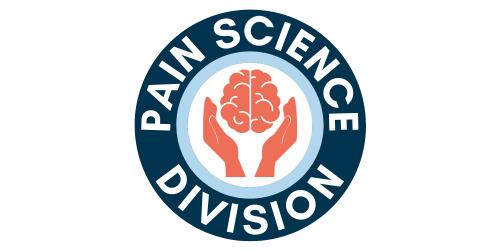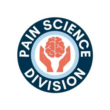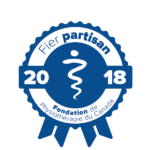Understanding Pain and Suffering from the Core Concept of Descartes and Spinoza

By: Zakir Uddin, BScPT, MSc, PhD (McMaster), Postdoctoral Researcher, McGill University
Pain suffering is a legal term used in lawsuits to define general damages against a claimant for the physical and emotional stress caused by an injury. The term is used to estimate the size of a settlement or how to fiscally determine such damages. Similarly, clinicians use this term to estimate patients personal suffering due to pain (mainly from patient’s narrative or experience on pain/injury) for better patient management strategies. Pain suffering composites two different words and explains two different pathways but combined effect explains one pathway toward experience of pain. Information of this experience is essential for clinical management of pain.
Descartes`s dualist theory (Cartesian dualism since 17th-century) explains pain as a phenomenon confirming its existence in body and connected to the immaterial soul (i.e. body and mind both exist as separate entities). This doctrine shaped the philosophy over the centuries and became part of the cultural bedrock in pain science. The “specificity theory” of pain (a famous influential byproduct of Cartesian doctrine) came in the light of mainstream of science and academia. It was intuitive for many physicians and early scientists to focus on the site of the injury (peripherals) rather than the central nervous system and its connection to the world (environment). However, modern science including “embodied cognition theory” or “biopsychosocial model of health” can’t support this narrow view focusing pain in the body only by neglecting mind or brain and its connection to the world (environment). Specifically, the evidence based “embodied” concept assists us in thinking of our body parts as sensors and actors (input-output devices). These sensors and actors are working for the brain like a computational model (where the brain is like a hard drive and the mind is like a software program) and the world is like a play-ground (the object where the cognitive agent acts). In fact, this concept supports the view of Spinoza (the great rationalists of 17th-century philosophy), who argued that body and mind are not two separate entities but one continuous substance.
The masterwork of Spinoza (the Ethics book) opposed Descartes’ philosophy on mind-body dualism. The question at hand is “why highlight this old debate in the context of understanding pain suffering”? Let’s explore a bit how “pain suffering” was defined in account of the “emotions” in Spinoza`s Ethics Part III. His model of “emotions” is like a psycho-physical event that enhances and diminishes the body’s ability to affect and be affected in many ways like conatus/active power (e.g. force of human motion/activities and self-regulation). He treated “emotions” like Euclid treated geometry. Emotions are derivatives and primitives are desire, pleasure, pain. The term “pain suffering” can be defined under these three primitives (desire, pleasure, pain). Understanding relationships between these primitives are helpful for clinicians managing pain. For example, hedonic pain-pleasure continuum is one of the keys of modern treatment paradigms and most of the therapies are based on it. Desire (consciousness of striving) is one of the core psychophysical variables (it includes both bodily appetite and consciousness of that appetite) and it is important for pain rehabilitation. Spinoza`s Desire might be similar to today’s “Expectation” which is also receiving recognition in pain science as a very powerful endogenous pain modulator, not as a metaphor.
Is there any benefit for pain management theory to explore Descartes and Spinoza? What’s making a difference in managing pain when a patient comes from a different faith based background? According to the Canadian Census report (2011), 23.9% of Canadians declare no religious affiliation. This number is increasing day by day. Expectation for pain relief works differently in people who have faith and absence of faith in religion, through two distinct biological mechanisms. The fundamental philosophical nature of these mechanisms are explored by two contemporary 17th centuries` philosophers (Descartes and Spinoza). One is soul based (the individual who has faith in religion) and another is ethics/consciousness based (those without faith in religion). People with faith are trying to release their pain suffering on the shoulder of God (cope with their condition) but we are not clear yet what atheists are trying to achieve (future research may explore this fact). Scientific literature suggests that religious/ spiritual practices are helpful in managing pain. It’s time to think about the people who don’t have religious/spiritual practices.
Estimating pain suffering in the clinic is crucial but patients always expect pain relief from clinicians. Clinicians can better help their patients if they try to know the mechanism of the patient’s pain suffering releasing pathway (e.g. the degree of faith practice by prayer/meditation). It might be helpful to design rehabilitation program according to the pathway of pain suffering release and optimizing expectations.
Key References:
1. Avraham, Ronen (2006). “Putting a Price on Pain-and-Suffering Damages: A Critique of the Current Approaches and a Preliminary Proposal for Change”. Northwestern University Law Review. 100: 87.
2. Duncan G (2000). Mind-body dualism and the biopsychosocial model of pain: what did Descartes really say? J Med Philos. 25(4):485-513.
3. Emanuel Derman [2009]. Money, Desire, Pleasure, Pain: An Edge original essay. Available at, https://www.edge.org/conversation/money-desire-pleasure-pain
4. Emily Eakin (2003). I Feel, Therefore I Am. New York Times. Available at,
http://oregonstate.edu/instruct/hsts412/doel/dvs.htm
5. David Banach (2007). Summary of Spinozas Account of the Emotions in Ethics Part III. Spinoza’s Theory of Emotions. Available at, http://dbanach.com/course/mod/forum/discuss.php?d=563
6. Gary Zabel (2008). Moral and Social Problems. University of Massachusetts Boston. Available at, http://www.faculty.umb.edu/gary_zabel/Courses/Spinoza/Texts/Spinoza%27s%20Approach%20to%20Understanding%20the%20Emotions.htm
7. Ozden Dedeli and Gulten Kaptan. Spirituality and Religion in Pain and Pain Management.
Health Psychol Res. 2013 Sep 24; 1(3): e29.
8. Siddall PJ1, Lovell M, MacLeod R. Spirituality: what is its role in pain medicine?
Pain Med. 2015 Jan;16(1):51-60.



